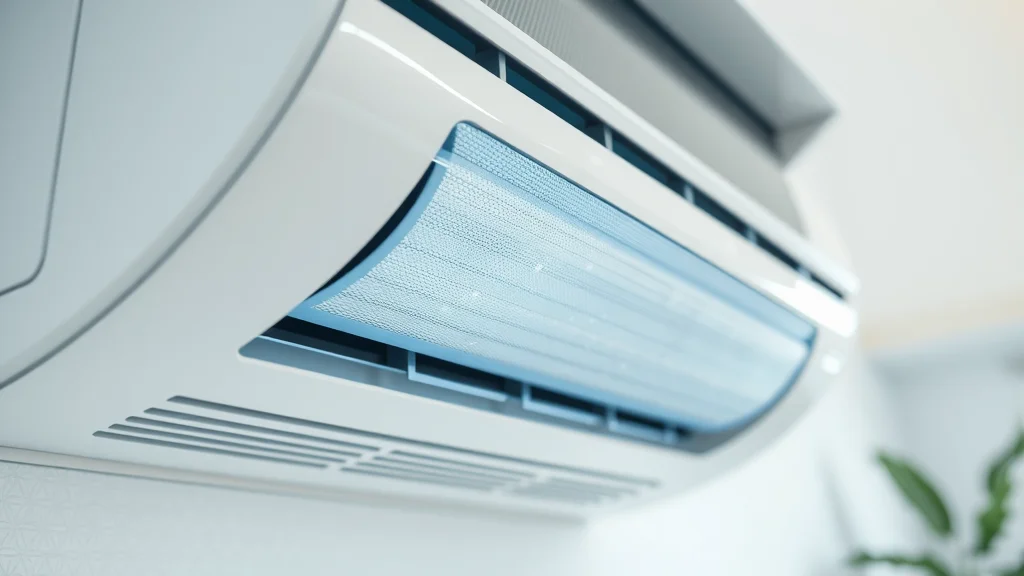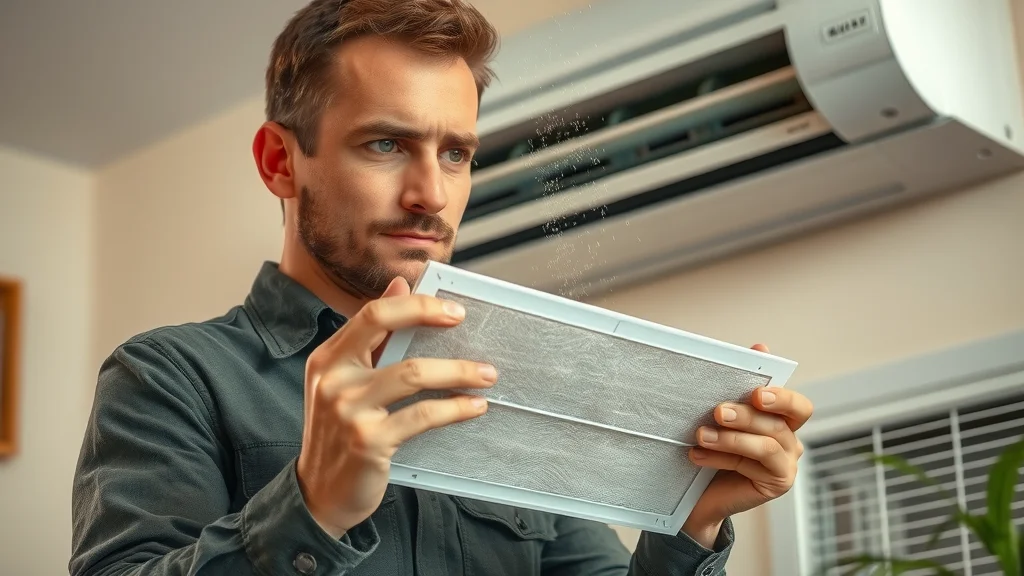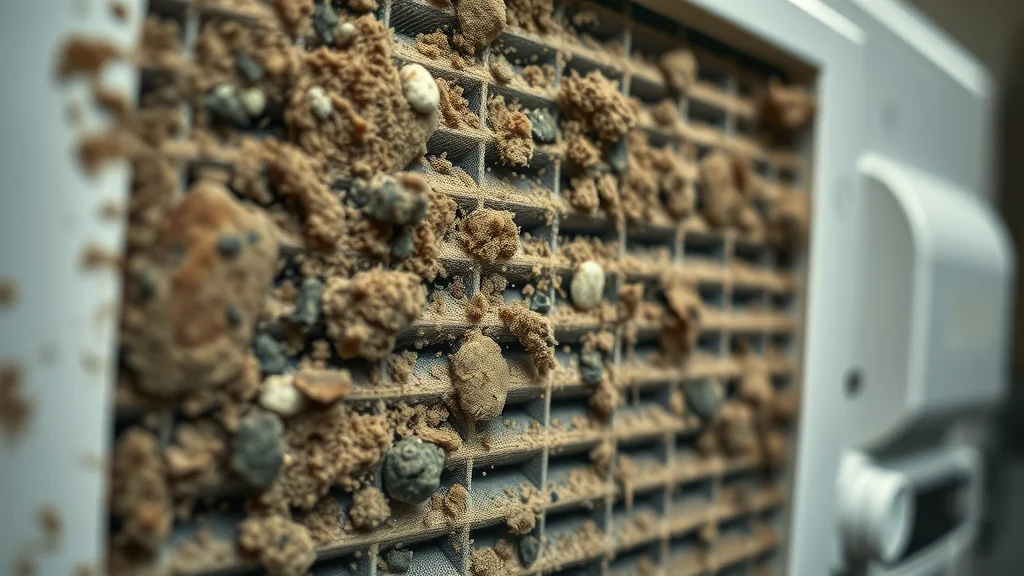Did you know that modern air conditioning systems can reduce indoor asthma triggers by up to 70%—and yet millions of homes are still missing out on these relief-boosting benefits? For the 25 million Americans living with asthma, improving indoor air quality isn’t just a comfort—it’s a game-changer for daily wellness. In this comprehensive guide, you’ll uncover how the right air conditioner can vastly improve life for asthma sufferers by targeting the root causes of attacks and symptoms, supported by statistics, expert insight, and practical advice for maximizing the air conditioning asthma benefits in your home.
Revealing the Link: Air Conditioning Asthma Benefits Backed by Surprising Statistics
- How air conditioning asthma benefits support people with asthma
- The role of air conditioners in managing indoor air quality
- Practical steps to maximize air conditioning asthma benefits
- Latest research on air conditioning for asthma relief
The connection between air conditioning asthma benefits and improved respiratory health is far from anecdotal—multiple studies now demonstrate significant reductions in airborne asthma triggers when air conditioners are used correctly. In fact, up to 60% of asthma symptoms originate from poor indoor air quality, especially during times of high pollen or humidity. When modern air conditioners utilize advanced air filters like HEPA filters, they effectively trap dust mites, pollen,
and mold spores—drastically reducing common asthma triggers that lead to frequent asthma attacks.
Furthermore, air conditioners help manage indoor humidity. High humidity is known to support dust mite and mold growth, two of the most potent asthma triggers in the home. By maintaining an optimal humidity range (about 30–50%), air conditioners make it harder for these irritants to thrive. Plus, new data shows that households using filtered cooling systems experience up to 43% fewer severe asthma attacks, especially among children with asthma or those living near high-traffic urban areas prone to outdoor air pollution.

Understanding Asthma and Common Asthma Triggers
For people with asthma, the simplest trigger—such as a whiff of dust or a sudden chill—can spark symptoms instantly. Asthma is a chronic condition impacting the lungs’ airways, making breathing challenging when exposed to irritating substances or environmental changes. It’s crucial to understand what can trigger asthma symptoms so you can utilize solutions like air conditioning to manage your risk. The most common triggers in most homes are allergens, airborne particles, and shifts in indoor air quality. While outdoor air pollution does play a role, most exposure—especially for children and older adults—happens inside.
Modern life has amplified these risks: tighter building envelopes for energy efficiency often means less ventilation, causing indoor air contaminants to accumulate. This makes it even more important to combat poor air quality inside, since airborne allergens like dust mites, pet dander, and mold spores can circulate through your home. Air filters and carefully maintained HVAC systems play a key role in minimizing these dangers, preventing unnecessary asthma attacks and giving asthma sufferers and their families peace of mind.
What Causes Asthma Symptoms to Flare Up?
- Poor indoor air and air pollution
- Exposure to indoor air pollution
- Allergens, dust, mold, and pet dander
- Sudden temperature changes
“Over 25 million Americans suffer from asthma, with indoor air pollution ranked among the top triggers.” — American Lung Association

Air Conditioning Asthma Benefits for People with Asthma
The role of air conditioners in protecting asthma sufferers goes far beyond just cooling. These systems impact almost every variable proven to affect asthma symptoms: the type of air filter used, how well the unit controls humidity, and the system’s regular maintenance routines. Unlike basic fans, which only move air around (and may even disperse allergens), air conditioners can remove hazardous particles from the air and maintain a steady, comfortable climate—reducing the chances of irritation from sudden temperature or humidity spikes.
According to recent studies, homes equipped with well-maintained, HEPA-filter air conditioners have a significantly reduced level of air pollutants such as dust mite particles, mold spores, pollen, and even tobacco smoke residue. This makes a world of difference for people with sensitive respiratory tracts who require reliable relief. In environments where outdoor air pollution is a concern, closing windows and depending on an air conditioner with a quality air filter can help create a protective indoor space, reducing the risk of asthma attacks and chronic inflammation.
How Air Conditioners Improve Indoor Air Quality
- Reducing indoor air pollution
- Filtering out common asthma triggers such as dust and pollen
- Maintaining optimal humidity levels
- Temperature control for reduced asthma symptoms
Air conditioning is uniquely positioned to enhance indoor air quality in homes or workplaces. Unlike passive ventilation, an efficiently run air conditioner actively draws in air, passes it through medical-grade air filters, strips out dust, pollen, and other common asthma triggers, and then recirculates clean, cool (or warm) air back into the room. Poor air, a frequent feature of unventilated or over-sealed homes, often contains a mixture of dust mites, pet dander, mold spores, and even pollutants from cleaning products—all of which can trigger asthma attacks. By updating your air filter regularly and ensuring the unit is well maintained, your air conditioning system becomes a strong first line of defense.
In addition to filtering, air conditioners remove excess moisture from the air, addressing high humidity—an environment in which dust mites and mold thrive. Smart controls and humidity sensors in modern systems allow users to dial in their environment with impressive precision, addressing the most relevant factors for asthma relief. Regularly replacing air filters (every 1–3 months, depending on use and contaminant load) ensures your unit is catching the majority of airborne triggers before they can start trouble.
Air Conditioners vs. Other Methods for Asthma Relief
| Factor | Air Conditioners | Fans | HEPA Air Purifiers |
|---|---|---|---|
| Reduces Indoor Air Pollution | Yes | No | Yes |
| Controls Temperature | Yes | Yes | No |
| Manages Humidity | Yes | No | No |
While fans can help with air movement, they unfortunately do not reduce the presence of dust, allergens, or other asthma triggers. Fans are often a source of spreading particles around a room, which may worsen air quality index scores indoors—especially for children with asthma or other vulnerable family members. HEPA air purifiers are excellent for filtering air and removing very fine particles, but they do not affect room temperature or moisture levels, which are significant in managing asthma risk. The right air conditioner often includes advanced air filters and humidity controls, combining the strengths of both fans and purifiers to offer comprehensive relief to asthma sufferers.

Choosing the Best Air Conditioner for Asthma Relief
Not all air conditioners are created equal when it comes to air conditioning asthma benefits. Homes with people susceptible to asthma attacks should prioritize choosing models that feature advanced air filtration, humidity controls, and easy maintenance features. The latest generation of air conditioning systems often come with medical-grade HEPA or activated carbon filters, smart air sensors that continuously monitor indoor air quality, and digital displays showing filter health or alerting you when to replace filters. Taking these features into account can be life-changing for asthma sufferers, as they address multiple asthma triggers at once.
Besides technical features, energy efficiency should not be overlooked. High-efficiency air conditioners not only reduce bills but also support more continuous usage, maintaining better air quality at all times. Look for units with Energy Star certification, reusable or easy-to-replace air filters, and compatibility with home automation or smart home systems to maximize convenience and impact. These systems are especially valuable in humid climates where poor air can dramatically impact comfort and wellbeing.
Essential Air Filters and Filtration Systems
- HEPA and advanced air filters
- Humidity control functions
- Smart air quality sensors
- Regular filter replacement alerts
The heart of any asthma-friendly air conditioner is its air filtration system. HEPA filters, in particular, are designed to capture 99.97% of microscopic particles—including dust mites, mold spores, and airborne pollen—that are notorious for triggering asthma attacks. Some high-end models even combine HEPA filters with activated carbon filters, which further neutralize volatile organic compounds (VOCs) and bad odors, offering extra protection for those with severe sensitivities. Supportive features like humidity control further reduce the chances of mold and dust mite proliferation, while smart sensors and app-based filter alerts make it much easier to keep the air conditioning system running at its best.
People with asthma, and especially families with children with asthma, should ensure the air conditioner is regularly checked and professionally serviced at least once a year. This maintains both air quality and system efficiency and further guards against sudden asthma symptoms or attacks.
Installation and Maintenance Tips for Air Conditioning Units
- Change air filters regularly
- Clean ducts to prevent mold
- Inspect for blocked air vents
Proper installation and maintenance are critical to getting the most out of your air conditioning asthma benefits. Even the best HEPA air filter loses its potency if it’s clogged with dust or neglected for months. Experts recommend changing or cleaning filters every one to three months, depending on usage and the presence of pets, smokers, or people with allergies in the home. Cleaning air ducts regularly prevents the buildup of allergens and mold spores, and ensures the entire HVAC system doesn’t become a breeding ground for asthma triggers.
Blocked or dusty air vents can restrict airflow, causing your air conditioning system to work harder and less efficiently. This can result in fluctuating temperatures and humidity, both culprits behind new asthma symptoms. Routinely check all accessible vents and have a professional perform deeper cleanings if needed—this investment can significantly reduce asthma attacks and help everyone breathe easier, regardless of sensitivities.

Reducing Asthma Triggers: Best Practices for Air Conditioning Use
Layering best practices with the use of your air conditioning system will protect your indoor air from both seasonal spikes and everyday pollutants. Consistent application of daily and seasonal tips further strengthens barriers against asthma triggers, creating a more comfortable and healthier environment for everyone. Begin by making full use of your system’s capabilities: always use high-efficiency air filters and regularly seal the indoor environment to prevent pollen and outdoor contaminants from entering the home.
For homes in high-humidity regions or during allergy season, consider augmenting your air conditioning with standalone dehumidifiers or air purifiers. This multistep approach takes advantage of the strengths of each device—filtering, cooling, and humidity control—to maximize asthma relief. By adjusting filter schedules and ensuring no ventilation pathways are blocked, you ensure the ongoing removal and reduction of airborne asthma triggers.
How to Minimize Indoor Air Pollution with Air Conditioners
- Use air conditioning with high-efficiency filters
- Keep windows closed during pollen seasons
- Run dehumidifiers if needed
Effective use of your air conditioning system involves not only running it during the hottest days but also during high-pollen or smog events. By maintaining a closed indoor environment, you reduce the infiltration of outdoor air that often carries high levels of pollutants or pollen. Dehumidifiers complement air conditioners by addressing pockets of high humidity, which may still occur in bathrooms or basements. Most importantly, schedule filter replacements, system checks, and cleaning as part of your seasonal home routine to enjoy the consistent air conditioning asthma benefits your investment can provide.

Expert Insights: Do Air Conditioners Reduce Asthma Triggers Effectively?
“Well-maintained air conditioners with HEPA air filters are especially helpful for people with asthma by consistently reducing irritants in indoor air.” — Dr. Emily Carter, Pulmonologist
Pulmonologists and air quality scientists overwhelmingly agree on the strong correlation between clean, cooled air and reduced asthma symptoms. Dr. Emily Carter, among other authorities, notes that the consistent use of maintained air conditioning units—especially those featuring HEPA or advanced filters—can actively reduce asthma triggers over time. The key, experts stress, is not only in choosing the right system but in proper upkeep, filter replacement, and regular assessment of air quality and humidity at home.
When used in combination with physician-guided medication and avoidance of known irritants, air conditioning can shape a proactive asthma management plan for kids and adults. The science is clear: prevention is possible, and many asthma sufferers can dramatically improve their quality of life and frequency of symptoms by prioritizing indoor air cleanliness and cooling with the right technology.
Potential Drawbacks: When Air Conditioning May Not Help Asthma Symptoms
While air conditioning systems deliver many asthma-relieving benefits, they can sometimes become part of the problem if neglected. Dirty or unchanged air filters, accumulated mold in ducts, or poor system installation may introduce new irritants rather than removing them. Worse, an overly humid or dry environment—stemming from an uncalibrated HVAC system—can exacerbate existing symptoms, making it important for all users to remain vigilant and proactive about system care. In some rare cases, bad habits like ignoring filter replacement schedules or running the unit with a blocked vent can turn even the best conditioning system into a source of asthma triggers.
Households in older homes with outdated systems should seriously consider upgrades, professional cleanings, and the addition of humidity controls and smart sensors. Regularly scheduled maintenance checks are highly recommended for anyone with a history of asthma attacks or sensitivity to poor air quality, ensuring the conditioning system does its job consistently and effectively year-round.
Possible Risks from Poorly Maintained Air Conditioners
- Dirty air filters increase indoor air pollution
- Mold growth inside units
- Poor humidity control
Infrequent maintenance is the leading cause of unintentional asthma irritation due to air conditioning units. When air filters are overdue for replacement, they can harbor and circulate mold spores, dust mite parts, and other airborne pollutants directly into living spaces. Similarly, clogged ducts provide the perfect breeding ground for mold, which not only degrades air quality but also increases health risks for anyone with respiratory vulnerabilities.

Frequently Asked Questions About Air Conditioning Asthma Benefits
Is air conditioning good for asthmatics?
Answer
Yes—when properly maintained, air conditioning is highly beneficial for people with asthma. Modern systems with HEPA or advanced filters remove dust, pollen, and other common asthma triggers from indoor air while also keeping humidity and temperature levels steady. This significantly reduces environmental factors that trigger asthma symptoms and provides safer, more comfortable indoor environments.
Does conditioning help with asthma?
Answer
Absolutely. Conditioning systems not only cool (or heat) air but, when equipped with quality filters, also remove many of the airborne pollutants known to provoke asthma attacks. Keeping filters clean and using features like automated humidity control help maintain indoor air quality, making it easier for asthma sufferers to breathe—and less likely to experience attacks.
What is the 4 4 4 rule for asthma?
Answer
The 4 4 4 rule is a quick-relief guideline for managing sudden asthma symptoms: Take 4 puffs of your reliever inhaler, wait 4 minutes, and if symptoms persist, take another 4 puffs. If there’s still no improvement, seek emergency medical help immediately. While air conditioners help prevent attacks, always have your medication and action plan ready.
Is air conditioning good for your lungs?
Answer
Generally, well-maintained air conditioning is good for your lungs, especially for those with allergies or asthma. By controlling temperature, reducing airborne irritants, and managing humidity, air conditioners provide an environment where sensitive lungs are less likely to be exposed to harmful triggers and pollutants.
Key Takeaways: Air Conditioning Asthma Benefits at a Glance
- Air conditioning reduces asthma triggers and improves air quality
- Choose units with advanced air filters for best results
- Keep systems well-maintained for consistent air conditioning asthma benefits
Final Thoughts on Air Conditioning Asthma Benefits
How to Take the Next Step: More Resources and Support
“Combining medical advice with practical home improvements can make a world of difference for people with asthma.”
Take control of your asthma symptoms and indoor environment—upgrade your air conditioner, maintain it diligently, and stay up-to-date on best practices for a healthier, more comfortable life.
Local Business In the Eustis Area? Reach out to us to advertise and reach thousands of local home owners!
Air conditioning systems can play a significant role in managing asthma symptoms by improving indoor air quality and controlling environmental factors that trigger attacks. By effectively filtering out airborne allergens such as dust mites, pollen, and pet dander, air conditioners help reduce common asthma triggers. Additionally, they maintain optimal humidity levels, preventing the growth of mold and dust mites, which thrive in moist environments. However, it’s crucial to ensure regular maintenance of these systems, as dirty filters and neglected units can circulate allergens and irritants, potentially worsening asthma symptoms. Therefore, while air conditioning offers substantial benefits for asthma management, proper upkeep is essential to maximize its effectiveness.

